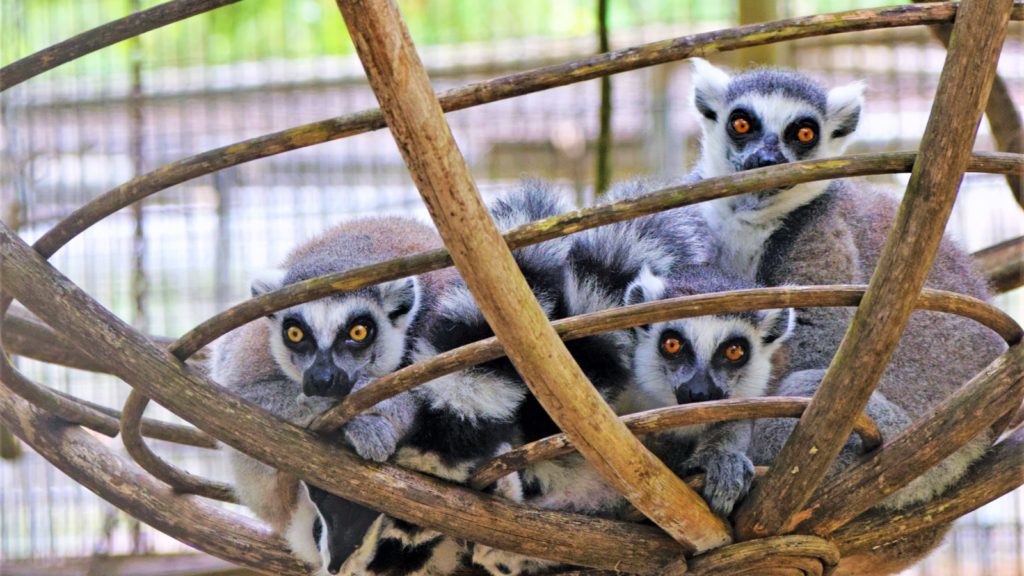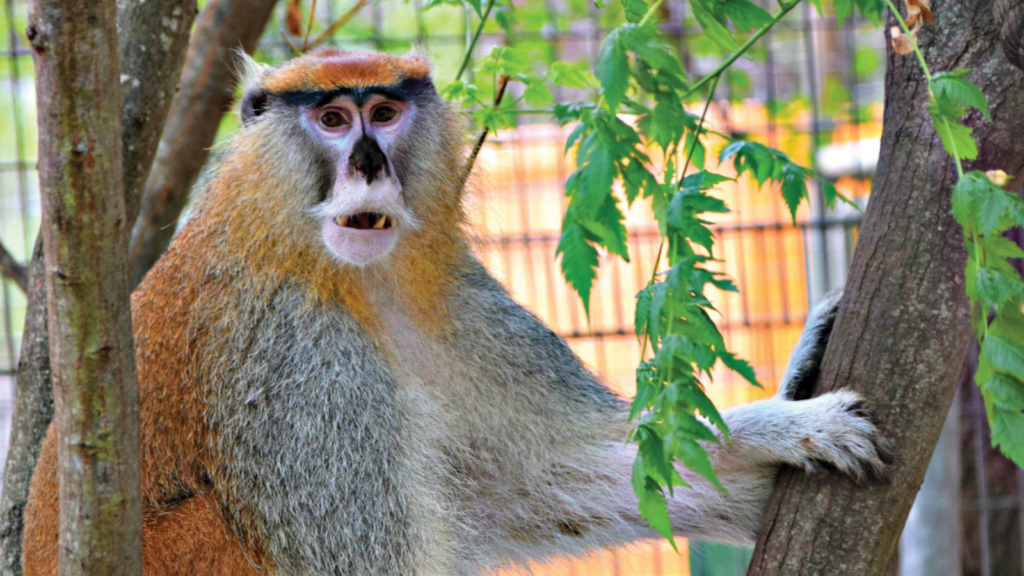Inside the Exotic Pet Trade
To get an idea of the scope of the illegal exotic pet trade, consider this: The illegal trade in wildlife is second only to that of drugs in the United States, according to the U.S. Fish and Wildlife Service (USFWS). A former USFWS chief of law enforcement told Animal Issues Magazine, published by the Born Free Foundation, “There is no stigma attached to being an animal smuggler. If you get caught illegally transporting animals on a first offense, it is possible you will not even do jail time. You can’t say the same for running drugs.”
The reason why Primarily Primates exists today is a result of the pet trade in squirrel monkeys.
If you read comic books back in the 70s, you may remember seeing an ad at the back of the comic book that sold squirrel monkeys as pets for $19.99. The market must have been insane with thousands of these little common yellow squirrel monkeys dying in pet homes, in transition from the wild, etc.
The founders of Primarily Primates were approached by a zoo that needed to place a couple of squirrel monkeys they rescued from a pet home. These squirrel monkeys just could not be integrated into the main social troupe of squirrel monkeys at the zoo.
When the zoo officials told the founders that they were trying to place these monkeys as a last-ditch effort to save them before the zoo killed them, the founders of the soon to be Primarily Primates helped the two little squirrel monkeys and helped create a primate rescue movement.
In the U.S., keeping primates as pets has taken on a new dimension with the phenomenon of monkeys being treated as “surrogate children,” according to the Captive Wild Animal Protection Coalition (CWAPC).
And the internet has only compounded the problem. With the click of a mouse, people can purchase any kind of animal. At a website called www.exoticanimalsforsale.net, capuchins are listed at $14,500; a squirrel monkey is listed at $8,900 and lemurs for $6,900.

Approximately 60 percent of the animals at Primarily Primates are discarded pets. Typically, the animal starts to bite and become aggressive, or picks up a nervous habit, like self-harming or feverishly pacing in the cage, or screaming. Non-human primates are most often abandoned by their owners between the ages of two and eight (depending on the species) after they have started maturing, and sometimes after their owners have had their teeth removed to restrict their assertive personalities.
While U.S. federal quarantine regulations forbid importing non-human primates as pets, there are no federal laws in the U.S. banning primate ownership or exotic animal ownership in general. Eighteen states ban private possession of exotic animals, 13 states have a partial ban and 13 require a license or permit.
The illegal global trade in exotic animals is estimated to be worth more than 10 billion dollars a year, according to the CWAPC. Many animals are taken from their natural environments to supply the pet trade. It is estimated that 90 percent of wild animals kept as pets are dead within the first two years of captivity.
The Center for Disease Control reported in 2007 in its Emergency Infectious Disease Journal that worldwide, an estimated 40,000 primates, four million birds, 640,000 reptiles, and 350 million tropical fish are traded live each year.
Here are a few of the stories of the residents Primarily Primates has provided care for at the sanctuary.
Joey
In March 2010, PPI received a call from a Pennsylvania couple about to leave the country. They hoped to place their 7-year-old capuchin monkey at a sanctuary. When the Pennsylvania family acquired Joey, who had previously been sold to someone who knew nothing of the care a monkey needs, he could not move well or be touched without screaming in pain. Eventually, his condition improved. PPI’s care staff introduced him to another ex-pet capuchin who also did not know how to socialize. Soon they were grooming each other and exploring each other’s food choices.
Jordan
Until he turned one, Jordan, a ring-tailed lemur, lived with a 20-year-old female whose grandfather purchased him in Helotes, Texas, as a birthday present for her. While she worked her boyfriend took care of Jordan, but Jordan craved the attention of his owner who fed him treats like Tootsie Roll pops. Jordan bit her boyfriend one day after she returned home from work, who then had to get stitches to close the wound. That is when Jordan’s owner brought him to Primarily Primates. Today Jordan has a reputation at the sanctuary for being especially charming. He resides in a habitat close to the main office of the sanctuary with a female lemur.
Burt
Five-year old Burt, a rhesus macaque, arrived at PPI in May of 2012 from a primate rescue group in Washington. He was kept as a pet illegally in Oregon before he was confiscated. He was addicted to candy. Often, many nonhuman primates in private homes are fed junk food. But today Burt no longer resists meals of bananas, mangoes, grapes, apples and strawberries.

Lennie
Lennie came to PPI in October 2013 after being kept as a pet. His owners surrendered him to a zoo when they moved to another state where private possession of monkeys was prohibited. Lennie was not provided with the care he needed while he was kept as a pet. Patas are the fasting running primate and need space to stretch their legs. Designed for speed, they have been known to reach speeds as high as 35 mph. Thanks to PPI Lennie now has that opportunity and is always on the move. He loves running along the side of his habitat and his favorite enrichment items are basketballs, bright colored toys and his giant caterpillar stuffed animal
